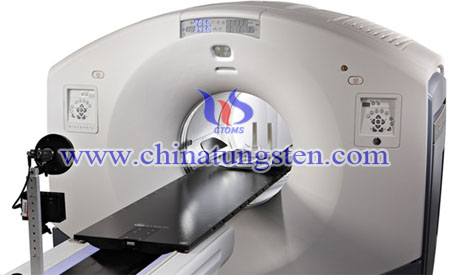Tungsten Alloy Shielding Application in PETⅠ
- Details
- Category: Tungsten Information
- Published on Tuesday, 29 December 2015 16:29
PET namely positron emission tomography, it is one way of nuclear medicine, which is to utilize a variety of the medical imaging methods for diagnosis and treatment of patients, it is also another functional brain imaging tomography technique since the CT technology appeared. Nuclear medicine techniques typically include: PET, single photon emission computer scanning technique, cardiovascular imaging and bone scans.
In a PET scanning, the patient will be injected a radioactive substance, and then lying on the platform through an annular structure (as shown in the following pic.). This structure, which contains γ-ray detector array, has a series of scintillation crystals, which connected with the photomultiplier tubes(PMT) one by one above the X-ray machine platform. These crystals will convert the γ-rays emitted from the patients into the photons, then the PMT will convert these photons and amplitude into an electric signal, which can be processed by the computer. This process can form a three-dimensional image of the human body after repeated.

It’s well known that the γ-ray has a strong penetrating power, so when exposed to γ-ray, the radiation will enter the bodies interior, and then occurs the ionization with the cells in vivo. The ions generated by ionization will erode the complex organic molecules such as proteins, nucleic acids and enzymes, which are the main components to constitute the living cells and tissues. Once they are damaged, it will lead to the interference of the normal chemical processes in the human bodies, if severely, it will make the cells dead. The tungsten alloy shielding can be applied to PET to weaken the ray intensity, thus weakening radiation, and ensure the doctors and patients’ safety.
| Tungsten Alloy Supplier: Chinatungsten Online www.tungsten-alloy.com | Tel.: 86 592 5129696; Fax: 86 592 5129797;Email:sales@chinatungsten.com |
| Tungsten News & Prices, 3G Version: http://3g.chinatungsten.com | Molybdenum News & Molybdenum Price: http://news.molybdenum.com.cn |



 sales@chinatungsten.com
sales@chinatungsten.com